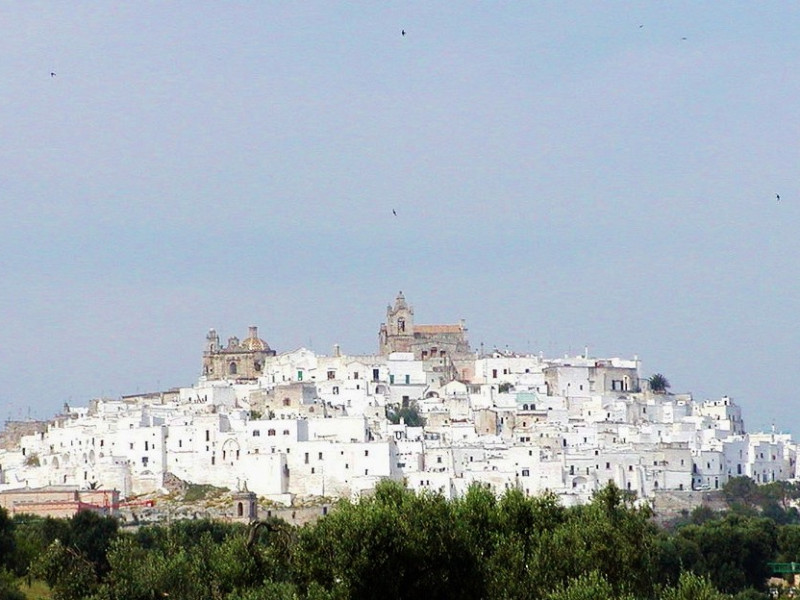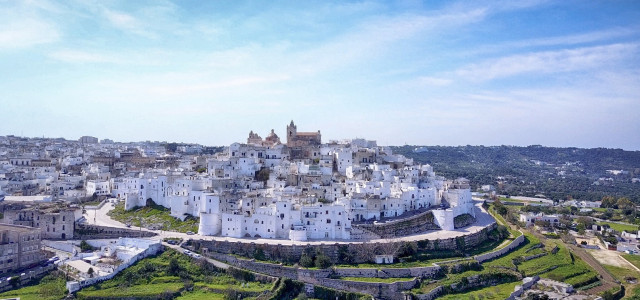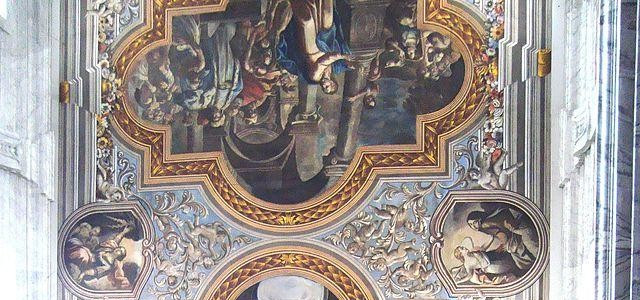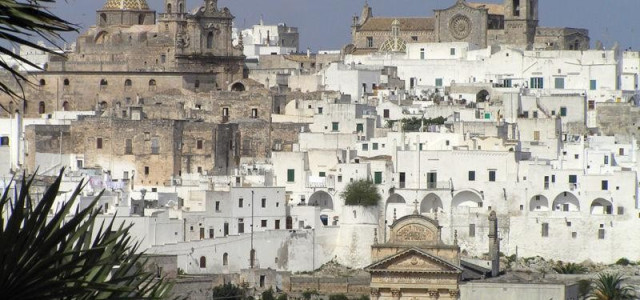Ostuni
Ostuni (Greek: Astynéon) is a city and comune in the province of Brindisi (Puglia, Italy), with a population of about 32,000 located about 8 km from the coast. Its main economic activities include tourism, attracted by its nearby pristine beaches, historical architecture in the city and its surroundings, as well as a vibrant olive and grape agribusiness. History The region around Ostuni has been inhabited since the Stone age. The town is reputed to have been originally established by the Messapii, a pre-classic tribe, and destroyed by Hannibal during the Punic Wars. It was then re-built by the Greeks, the name Ostuni deriving from the Greek Astu néon ("new town"). Sacked after the fall of the Western Roman Empire, in 996 AD the town became part of the Norman County of Lecce. In this period started the development of medieval town around the summit of the 229 m high hill, there was built a castle (now only parts of the original castle remain) and city walls with four gates. From 1300 to 1463 it was part of the Principality of Taranto and from 1507 (together with what is now the frazione of Villanova and Grottaglie) passed to Isabella, Duchess of Bari, wife of Gian Galeazzo Sforza, Duke of Milan. Under the influence of Isabella, Ostuni enjoyed a golden-age within the wider panorama of the Italian Renaissance. In this period Isabella gave protection to humanists and people of art and letters, including bishop Giovanni Bovio. Isabella died in 1524 and Ostuni passed as dowry to her daughter Bona Sforza, wife-to-be of Sigismund I of Poland, King of Poland. During Bona Sforza's government, Ostuni continued to enjoyed a liberal and magnanimous regime. In 1539 she had towers built along all the shoreline, as protection against anticipated attacks from the Turks who controlled the Balkans. These towers (still existing, including Pozzella Tower, the Pylon, Villanova and others), were permanently garrisoned and communicated through fire beacons. Main sights The so-called "Old Town" is Ostuni's citadel built on top of a hill and still fortified by the ancient walls. Ostuni is regarded as an architectural jewel, and is commonly referred to as "the White Town" ("La Città Bianca", in Italian) for its white walls and its typically white-painted architecture. A monument on its own, the town's largest buildings are the Cathedral and the Bishop's Palace, together with a number of palazzi of local aristocratic families: Aurisicchio, Ayroldi, Bisantizzi, Falghieri, Ghionda, Giovine, Jurleo, Marseglia, Moro, Palmieri, Petrarolo, Siccoda, Urselli, Zaccaria. In the surrounding countryside there are typical Pugliese "masserie", fortified large estate-farms, one of which, San Domenico, was once held by the Knights of Malta. Tourism Ostuni is one of the most beautiful and famous towns in Apulia. Its unique historic town, called "Città Bianca" (the Italian for "white town"), its monuments, its baroque-style churches, are examples of the great architecture and culture that characterizes this part of South Italy. In the summertime Ostuni is a popular destination for tourists from all over the world. The population rises from about 30,000 inhabitants in wintertime to about 100,000. Ostuni is the fifth city in Italy for the percentage of British people residents. People from North Europe, in particular Great Britain, Ireland, Scandinavia and Germany went in Ostuni searching for good weather and good food. This particular phenomena is called "salentoshire" and characterizes this area of Apulia since 2010. References External links Official website





